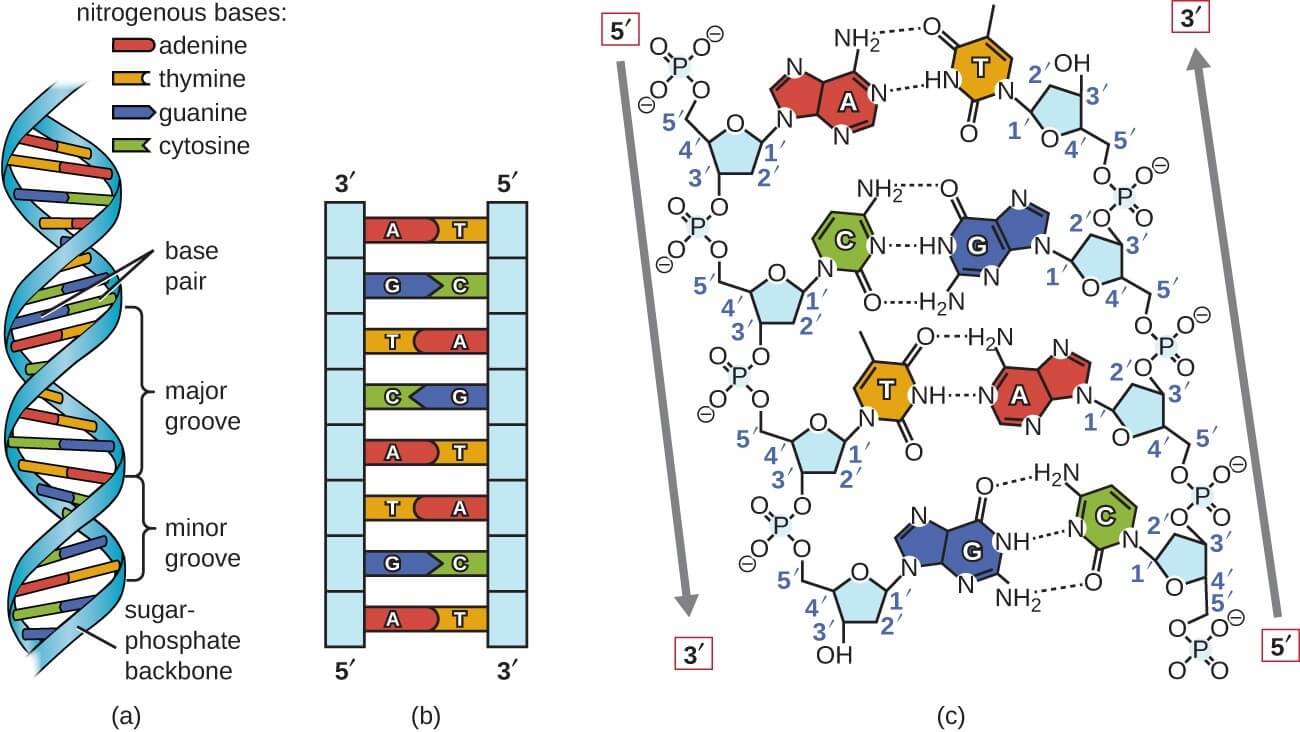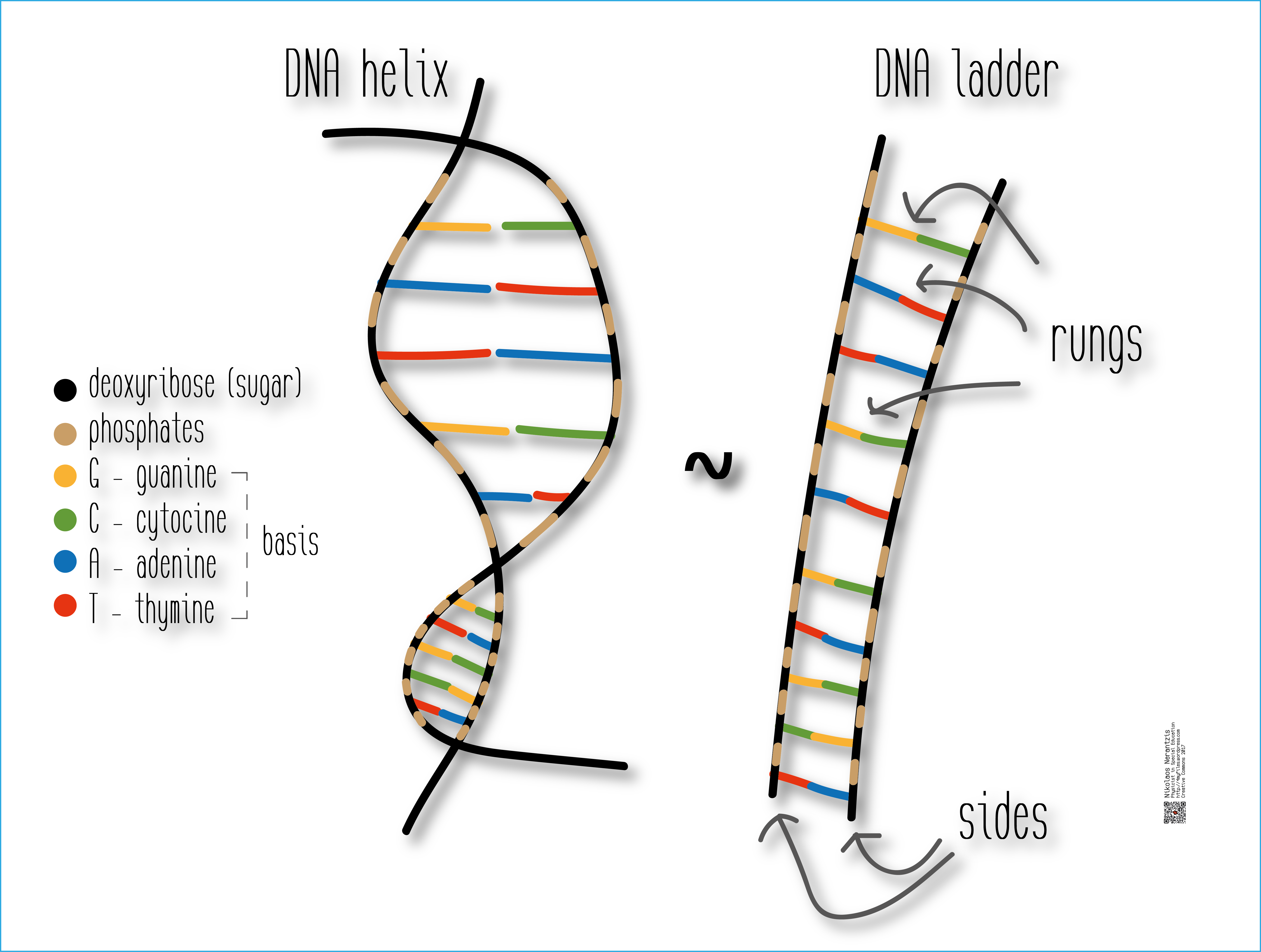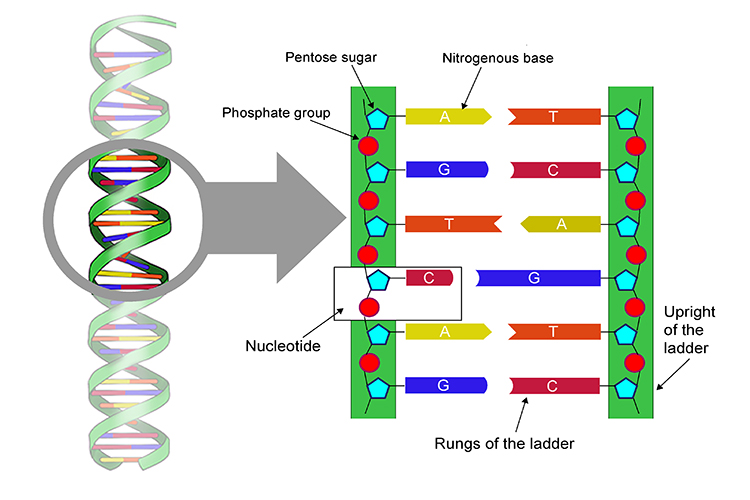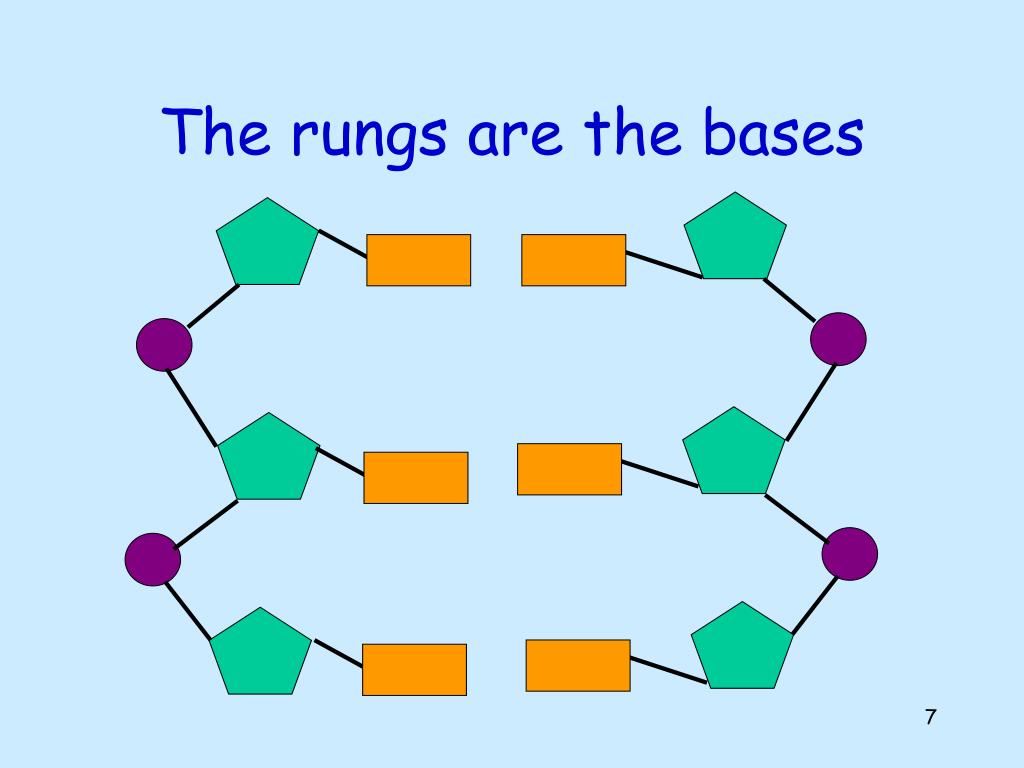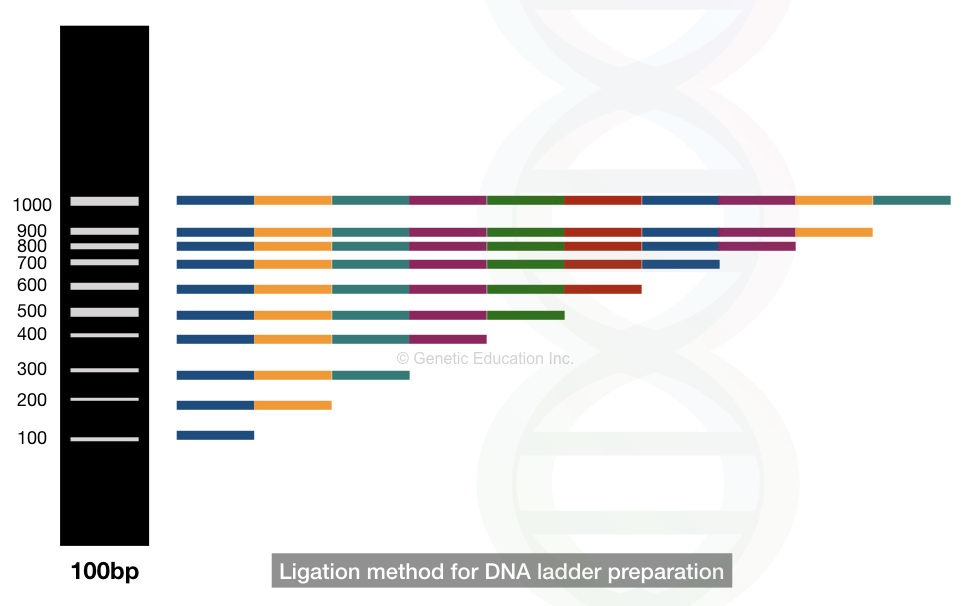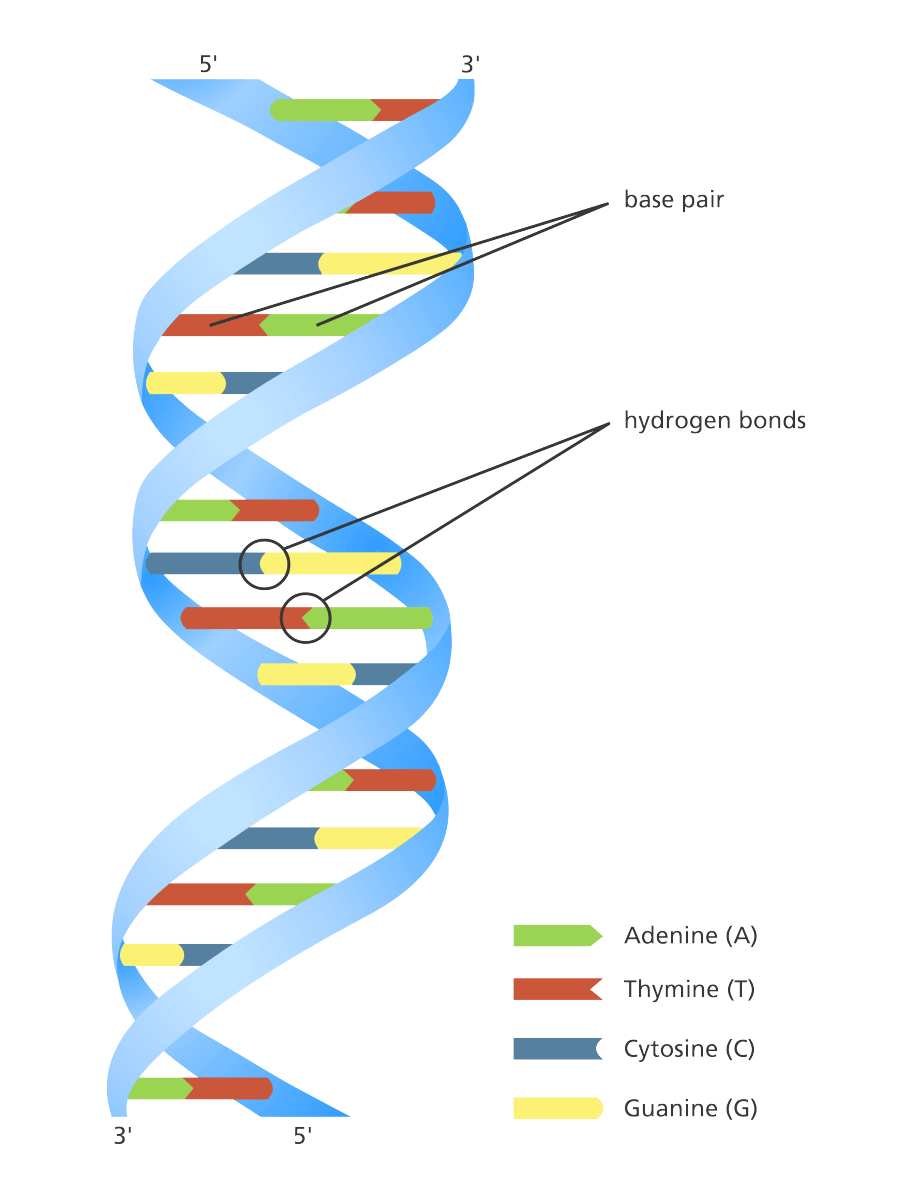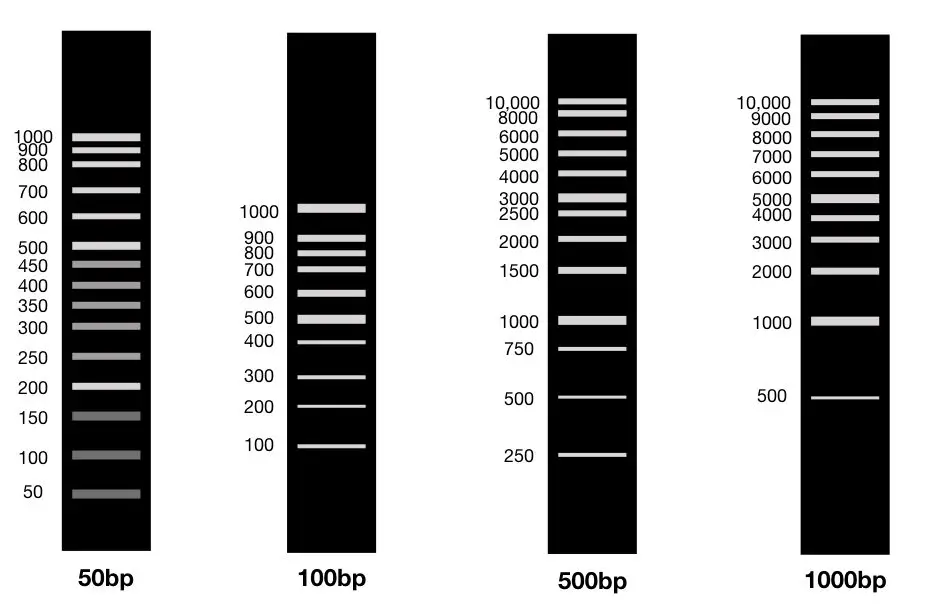What Forms The Rungs Of The Dna Ladder
What Forms The Rungs Of The Dna Ladder - The phosphate and deoxyribose molecules form the sides of the dna ladder while nitrogenous bases form the rungs. The rungs of the dna ladder are formed by pairs of nucleotides, creating a magnificent double helix. The double helix looks like a twisted ladder—the rungs of the ladder are composed of pairs of nitrogenous bases (base pairs), and the sides of. The four bases that make up the rungs of the dna ladder are adenine (a), thymine (t), cytosine (c), and guanine (g).
The four bases that make up the rungs of the dna ladder are adenine (a), thymine (t), cytosine (c), and guanine (g). The rungs of the dna ladder are formed by pairs of nucleotides, creating a magnificent double helix. The phosphate and deoxyribose molecules form the sides of the dna ladder while nitrogenous bases form the rungs. The double helix looks like a twisted ladder—the rungs of the ladder are composed of pairs of nitrogenous bases (base pairs), and the sides of.
The rungs of the dna ladder are formed by pairs of nucleotides, creating a magnificent double helix. The phosphate and deoxyribose molecules form the sides of the dna ladder while nitrogenous bases form the rungs. The double helix looks like a twisted ladder—the rungs of the ladder are composed of pairs of nitrogenous bases (base pairs), and the sides of. The four bases that make up the rungs of the dna ladder are adenine (a), thymine (t), cytosine (c), and guanine (g).
DNA Structure & Function A Simple Guide for Beginners
The phosphate and deoxyribose molecules form the sides of the dna ladder while nitrogenous bases form the rungs. The double helix looks like a twisted ladder—the rungs of the ladder are composed of pairs of nitrogenous bases (base pairs), and the sides of. The four bases that make up the rungs of the dna ladder are adenine (a), thymine (t),.
Catalyst 1. What are chromosomes composed of? 2. What are genes? 3
The double helix looks like a twisted ladder—the rungs of the ladder are composed of pairs of nitrogenous bases (base pairs), and the sides of. The phosphate and deoxyribose molecules form the sides of the dna ladder while nitrogenous bases form the rungs. The four bases that make up the rungs of the dna ladder are adenine (a), thymine (t),.
PCR Polarpedia
The double helix looks like a twisted ladder—the rungs of the ladder are composed of pairs of nitrogenous bases (base pairs), and the sides of. The phosphate and deoxyribose molecules form the sides of the dna ladder while nitrogenous bases form the rungs. The four bases that make up the rungs of the dna ladder are adenine (a), thymine (t),.
Detailed page of the structure of DNA and its double helix
The rungs of the dna ladder are formed by pairs of nucleotides, creating a magnificent double helix. The four bases that make up the rungs of the dna ladder are adenine (a), thymine (t), cytosine (c), and guanine (g). The double helix looks like a twisted ladder—the rungs of the ladder are composed of pairs of nitrogenous bases (base pairs),.
PPT The Structure of DNA PowerPoint Presentation, free download ID
The double helix looks like a twisted ladder—the rungs of the ladder are composed of pairs of nitrogenous bases (base pairs), and the sides of. The rungs of the dna ladder are formed by pairs of nucleotides, creating a magnificent double helix. The phosphate and deoxyribose molecules form the sides of the dna ladder while nitrogenous bases form the rungs..
What is a DNA ladder? And How To Prepare It? (A Complete Protocol)
The four bases that make up the rungs of the dna ladder are adenine (a), thymine (t), cytosine (c), and guanine (g). The rungs of the dna ladder are formed by pairs of nucleotides, creating a magnificent double helix. The double helix looks like a twisted ladder—the rungs of the ladder are composed of pairs of nitrogenous bases (base pairs),.
DNA Structure & Function A Simple Guide for Beginners
The four bases that make up the rungs of the dna ladder are adenine (a), thymine (t), cytosine (c), and guanine (g). The rungs of the dna ladder are formed by pairs of nucleotides, creating a magnificent double helix. The phosphate and deoxyribose molecules form the sides of the dna ladder while nitrogenous bases form the rungs. The double helix.
Steel Forms and Ladder Rungs Astron Metal Works Corporation
The phosphate and deoxyribose molecules form the sides of the dna ladder while nitrogenous bases form the rungs. The four bases that make up the rungs of the dna ladder are adenine (a), thymine (t), cytosine (c), and guanine (g). The rungs of the dna ladder are formed by pairs of nucleotides, creating a magnificent double helix. The double helix.
What is a DNA ladder? And How To Prepare It? (A Complete Protocol)
The four bases that make up the rungs of the dna ladder are adenine (a), thymine (t), cytosine (c), and guanine (g). The rungs of the dna ladder are formed by pairs of nucleotides, creating a magnificent double helix. The double helix looks like a twisted ladder—the rungs of the ladder are composed of pairs of nitrogenous bases (base pairs),.
Storing Information Biology for NonMajors I
The four bases that make up the rungs of the dna ladder are adenine (a), thymine (t), cytosine (c), and guanine (g). The phosphate and deoxyribose molecules form the sides of the dna ladder while nitrogenous bases form the rungs. The double helix looks like a twisted ladder—the rungs of the ladder are composed of pairs of nitrogenous bases (base.
The Double Helix Looks Like A Twisted Ladder—The Rungs Of The Ladder Are Composed Of Pairs Of Nitrogenous Bases (Base Pairs), And The Sides Of.
The four bases that make up the rungs of the dna ladder are adenine (a), thymine (t), cytosine (c), and guanine (g). The phosphate and deoxyribose molecules form the sides of the dna ladder while nitrogenous bases form the rungs. The rungs of the dna ladder are formed by pairs of nucleotides, creating a magnificent double helix.
